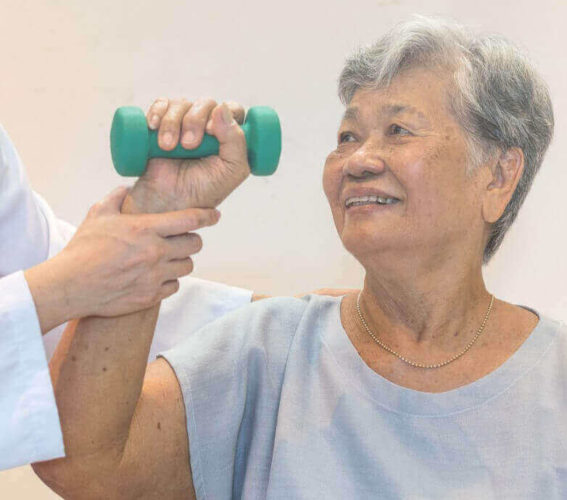Physical activity is not only important for physical health. It also plays an essential role for mental health. Regular exercise after stroke can help you stay fit and prevent future strokes by helping you lose weight, lower blood pressure, and improve your overall quality of life.
Regular exercise after stroke is essential for regaining mobility. It can even help reduce levels of depression and anxiety, which is a common personality change after stroke. Exercise is essential for stroke survivors and drives poststroke recovery.
Simple activities for the beginning
Stroke is a complicated condition with various side effects; this can make exercising difficult or even dangerous. Even if a stroke causes severe mobility restrictions, there is always some form of exercise that can help to improve health. Some survivors may need to begin with simple activities to guide recovery before moving on to more physically demanding ones.
Talk with a physical therapist or rehabilitation specialist about your specific capabilities; they can help boost exercise effectiveness while lessening the risk of injury. These healthcare professionals are experts at helping people regain mobility and maintain a healthy lifestyle after a traumatic experience.
When it comes to exercising after stroke, remember these key points.
It is a process.
Repetitive exercises are key to rewiring the brain and boosting neuroplasticity. Don’t be surprised if slow, repetitive activities make up the bulk of your workout at the start of your rehabilitation process. The more you repeat each movement, the better you will get at it. Eventually, you will be able to move onto more complicated workouts as you regain your mobility.
You should always talk with your doctor, physical therapist or occupational therapist before starting a new exercise routine. They will make sure the new exercises are within your capabilities, or they can offer safer alternatives. Remember, as you make progress toward recovery, you will be able to participate in more activities, so don’t get discouraged.
There are countless exercise options available once your doctor approves you for a more rigorous routine. You should pick a few different types that pique your interest, so you stay motivated and avoid boredom during your rehabilitation. Walking, jogging, yoga, pilates, swimming, and dancing are just a few potentially safe exercises for post-stroke health. Some people prefer a traditional gym setting, which is a great option as well.
Listen to your body.
When working out, it is crucial to always listen to your body. Your exercise routine should be challenging, but not so much that you feel major discomfort or pain. Avoiding injury and exhaustion is the top priority, so don’t let your motivation push you to do more than you are capable of.
Rest is essential after a stroke. Be sure not to overwork your body and deprive it of the necessary sleep it needs to recover. Take frequent breaks if you feel out of breath or fatigued. Understand that it is a process, and even 30 minutes of activity a day can decrease your risk of recurrent stroke.
What if you avoid exercising?
Lifestyle changes are one of the most impactful factors that can decrease the risk of recurrent strokes. Eating well and exercising regularly can dramatically reduce your risk of high cholesterol, high blood pressure, and other stroke risk factors.
Try not to let the fear of injury or failure keep you from exercising. Trust your team of doctors and rehabilitation specialists to guide you in the right direction toward recovery. Keep in mind that if you do not exercise at all after a stroke, your chances of regaining mobility are minimal. It is also very likely that you will suffer from recurrent strokes if you do not make effective lifestyle changes.
Without regular exercise, muscles can atrophy from disuse. Deterioration of your physical condition without regular exercise is likely. This is understood to be a form of learned non-use. The brain actually forgets how to activate certain muscles.


- Expect your stroke rehabilitation to start slow with repetitive exercises to boost neuroplasticity.
- As you regain mobility, your doctor may approve you for more rigorous activities.
- Check-in with your body regularly for signs of stress or exhaustion.
- Aim to be active for at least 30 minutes a day.
- Understand the adverse effects associated with not exercising.
- Stay positive and take it one day at a time.



